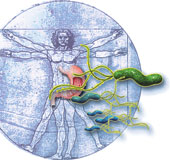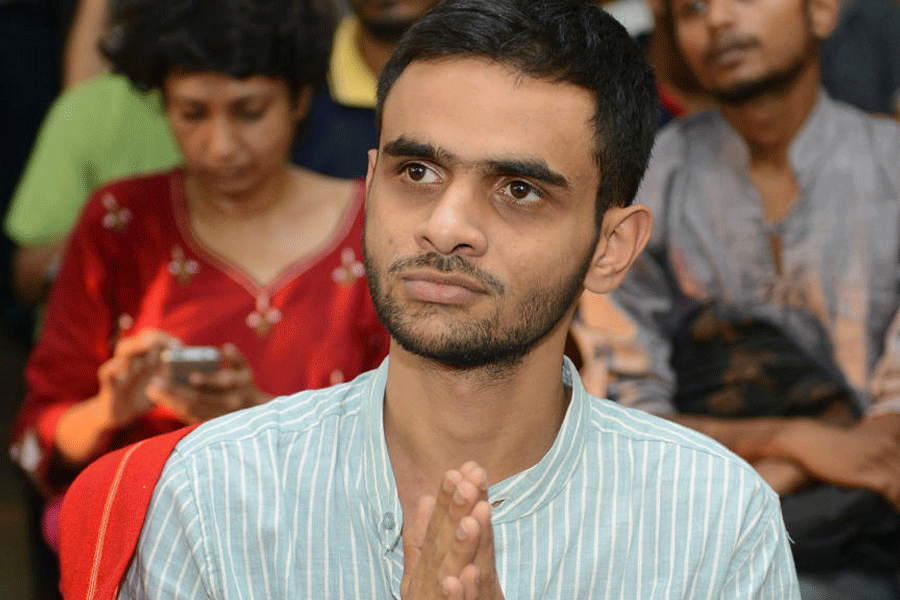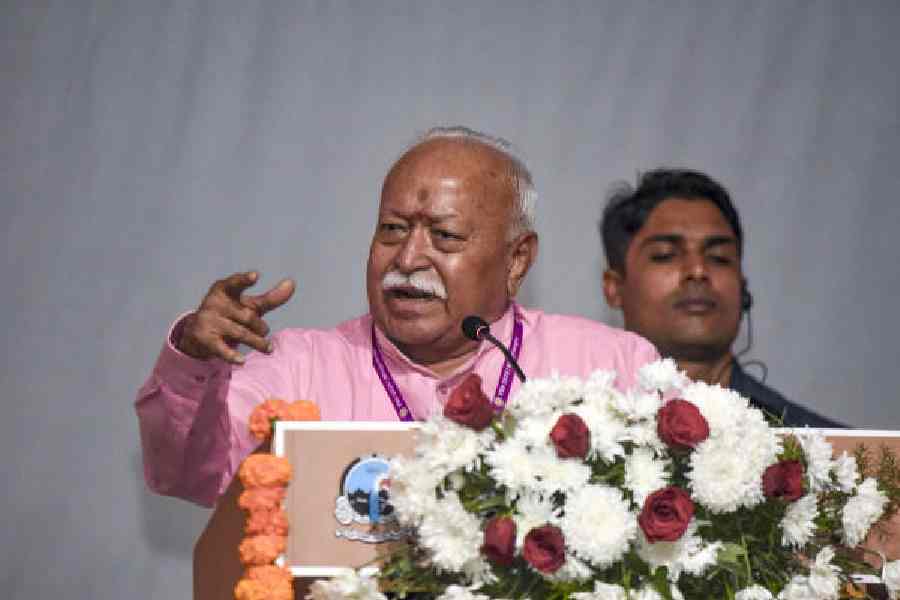 |
| The H. pylori bacterium that resides in human stomach |
Australian doctors Robin Warren and Barry Marshall were in Stockholm last Friday to receive this year’s Nobel Prize in medicine. The citation for the world’s most coveted award lauded their “discovery of the bacterium Helicobacter pylori and its role in gastritis and peptic ulcer.” But not everyone in the medical fraternity cheered the scientists for their idea which, critics argue, may sound the death-knell of a bug that’s one of humanity’s oldest and closest companions. Questions were raised over the campaign to fully eliminate the bug, which is believed to be beneficial to many people, including Indians.
Experts have been critical of the Nobel committee’s choice ever since it was announced in October. “In choosing Marshall and Warren as winners of the 2005 prize, the committee has turned away from basic research and plumped instead for old-fashioned medical detective work,” wrote the British Medical Journal . “This award has surprised many because there were so many other outstanding basic studies on the wait list,” remarked an editorial in the Annals of Clinical Microbiology written by Dr Niyaz Ahmed, an expert on H. pylori at Hyderabad’s Centre for DNA Fingerprinting and Diagnostics (CDFD).
“Since this organism has colonised the human digestive tract for many thousands of years, and has persisted quite successfully, it’s implied that the bacteria are beneficial to its human hosts,” said Ahmed. According to him, although more than half of the world’s population has the bug, most of the infected people show no symptoms of any disease. The frequency of infection varies from country to country. In most developing nations like India, nearly 80 per cent of adults harbour the microbe from early childhood.
Although the bacteria is responsible for disorders ranging from gastric ulcer to stomach cancer in developed nations, it’s relatively harmless in Indians. “The incidence of gastric cancer is almost negligible in this country and even those who harbour dense colonies of the bacteria never develop the disease,” said Ahmed. Studies done in different parts of India have shown that the H. pylori found here is genetically distinct from that detected in the West, or even in east Asia.
Genetic diversity
H. pylori has a peculiar genetic diversity. Eight years ago when US scientists decoded its genetic sequences they found that its two strains could differ in their genetic contents by as much as 6 per cent. This was a striking discovery, because in the same species genes usually don’t vary so much. For instance, although humans and chimps are two distinct species ? but close kins ? their genetic difference is only 1.5 per cent.
The genetic difference in the strains of H. pylori is believed to have emerged in response to the geographic location of its host, or humans. As a result, the bug evolved along with people. It adapted to a particular niche of their stomach. “H. pylori can be good or bad, depending on the context,” said Dr Martin J. Blaser, one of world’s foremost experts on the bug, who also heads the department of medicine and professor of microbiology at the New York University School of Medicine. “To fully understand H. pylori ’s effects on health, researchers must investigate the complex web of interactions between this remarkable microbe and its hosts.”
The bug has confounded scientists ever since it was first noticed by German anatomists in the human stomach in 1875. Since the spiral-looking bacteria could not be grown in a lab, experts ignored them. It was not until the early 1980s that Warren and Marshall rediscovered the bug, opening up the floodgates of investigations of its role in the stomach.
Warren and Marshall’s discovery reads like a chapter from pulp fiction. As the former observed the organism under his microscope he went against contemporary wisdom that held no bug could survive in the highly acidic environment of the stomach; the latter used himself as a guinea pig to prove that the bug was a causative agent for stomach inflammations. Eventually the duo showed one thing: antibiotics could eliminate the bug. And if left untreated, H. pylori could trigger the onset of stomach cancer.
Once that was established, doctors the world over made it their mission to kill every H. pylori they could trace. While stomach cancers killed millions in the developed world, the idea that a simple antibiotic regimen could tackle the menace was accepted as a medical miracle. Also, more and more researchers found H. pylori ’s link to problems ranging from heart attacks to strokes.
Just as doctors in the developed world were nearing their goal of eliminating the microbe, so that gastric ulcer and stomach cancer could be eradicated, some experts came across a host of disorders involving the oesophagus or the gullet, including cancer of the organs. Studies revealed that while stomach cancer incidence became negligible, the number of oesophageal cancer patients had risen by 11 per cent.
Doctors faced a baffling paradox: the bug that caused gastric ulcer and stomach cancer in some people might protect them from cancer of the oesophagus. “In the long run, eliminating H.pylori may trade one cancer risk for another,' Blaser wrote in an editorial in the Annals of Internal Medicine .
So the wheel of fortune turned in favour of the bug within a decade. Studies began to differentiate its effects on different segments of the gastro-intestinal tract. Genetic experts revealed that the virulence of the bacteria could be attributed largely to a gene called cag A. The strain of H. pylori that contained it was likely to cause gastric ulcer and stomach cancer, but it could prevent diseases of the upper stomach and oesophagus.
Indians are different
However, stereotypes don’t apply to both H. pylori and the types of cancer it causes. According to Dr Abhijit Chowdhury, an associate professor of gastroenterolgy at the Institute of Post-graduate Medical Education and Research (IPGMER), Calcutta, most Indians harbour the bug peacefully in their digestive system without showing any symptoms. “Believe it or not, my own stomach has a rich colony of the bacteria,” he said. “And that too of the most virulent strain ? that is, equipped with cag A genes.”
Chowdhury came across the bacteria while examining the mucus layer of his stomach during his research to look into the virulent genes of H.pylori in patients flocking to the IPGMER. The study, published in Journal of Clinical Microbiology, revealed that most of the ‘healthy’ volunteers, Chowdhury among them, had the bug ? and it was of a dangerous variety. “In another study, we found that the Santhals and Oraons belonging to primitive tribes had the bug, and in most cases it tested positive for cag A genes,” he said.
To his surprise, Chowdhury found that many of these infected people showed no symptoms of gastric ulcer or stomach cancer. Just like his, Ahmed’s study, too, on the residents of Ladakh and Hyderabad, revealed that the presence of the virulent strains of H. pylori in many Indians didn’t make them patients of gastric ulcer or stomach cancer.
 |
| Perfect health: Ladakhis harbour friendly bugs in their body |
What protects Indians from the ravages of H.pylori? “Probably a fibre-rich diet in most Indians does the trick,” suggested Chowdhury. “The nutritional benefit of natural herbs, spices and vegetables is certainly an important factor,” contended Ahmed. The absence of both stomach and oesophageal cancers points to the fact that the bug has been cohabiting peacefully in most Indians.
The dietary angle brings a new dimension into the forefront: the environment or the lifestyle of human hosts. “It seems the bug maintains a symbiosis (or peaceful coexistence) until you irritate or disturb its niche in the human stomach,” Chowdhury pointed out.
According to Blaser, widespread use of antibiotics has disturbed the cohabitation of the bug. Especially in the developed world antibiotic abuse has been decimating not only H.pylori but also many other ‘friendly’ bacteria in our body which help us digest our food, make vitamins and protect us from fatal pathogens.
Fortunately, Indian doctors are yet to come across such resistance from microbes, mostly because many Indians find expensive antibiotics unaffordable. “But resistance to cheaper antibiotics like metronidazole has begun to surface even in this country,” said Dr Asish Mukhopadhyay, an expert on H.pylori at the National Institute of Cholera and Enteric Disease (NICED), Calcutta.
What should physicians do about H. pylori? “They need to re-evaluate antibiotic treatments that eliminate H. pylori (and remove other friendly bacteria from various parts of the body),” said Blaser. His suggestion is clear: limit the use of antibiotics and treat only those who are at risk of gastric ulcer or stomach cancer.
Chowdhury said he prescribed antibiotic regimens for only those H.pylori-infected people who showed signs of ulcers or other related disorder in endoscopic examinations. “Although most of the H. pylori treatment regimens available in India comprise metronidazole, I request the patients not to use them but go for two other antimicrobials (amoxicillin, tetracyclins etc.) along with drugs known as proton-pump inhibitors,” said Mukhopadhyay.
According to Blaser, doctors should act judiciously, taking into account the complexity of coevolution of humans and the micro-organisms that share their bodies. “Understanding our long-time bacterial companions can offer a new avenue for understanding our own bodies and will expand the horizons of medical microbiology,” he summed up.










